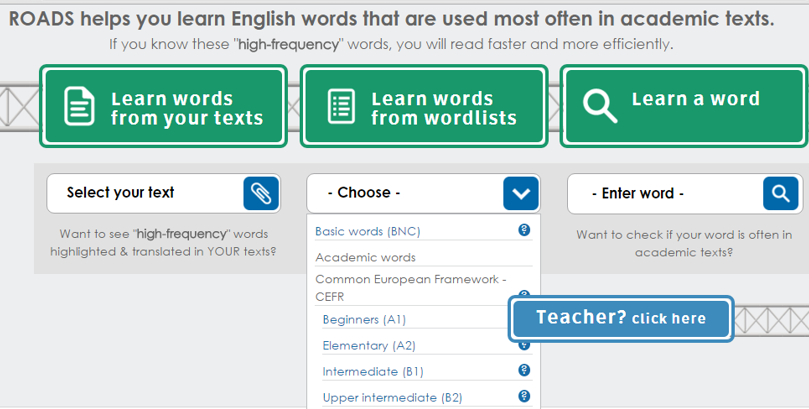The following are FAQs regarding a CEFR-aligned Framework for English Teaching in Higher Education. These questions may be helpful as you work through the various aspects of the Framework.
- General FAQs about the Framework
- FAQs related to classroom implementation
- FAQs related to grammar
- FAQs related to vocabulary
General FAQs about the Framework
The CEFR is not a curriculum or syllabus that spells out exactly what to do in the classroom - it does not prescribe what should be covered in your classroom. The framework is a set of guidelines and principles – it does not provide something that can be implemented "as is": You as a teacher will decide how to make this 'frame' work. The framework will contribute towards standardization by emphasizing the importance of a common goal for all EFL courses at college and university level: Going beyond reading comprehension by teaching all four skills to help students communicate more effectively in English. You will make your own decisions about how to reach this common goal, based on your own (1) specific context and (2) professional expertise. One of the main benefits of aligning the Framework with the CEFR is that it will enable Israeli teachers and students to be part of an internationally recognized framework for English. This will form a sound basis for mutual recognition of tertiary level EFL/EAP courses between colleges and universities here in Israel as well as abroad. Chile to China – Countries Currently Using CEFR An additional benefit is that the CEFR adopts an action-based approach aimed at preparing students to communicate effectively in a range of real-life situations. The CEFR defines knowledge of a language in a series of 'can-do' statements that describe what learners typically can do in a language and how well they can do it at each CEFR level. Can-do statements describe a coherent progression of what language learners can typically do at the six CEFR levels (A1, A2, B1, B2, C1 and C2, A1 being the lowest and C2 being the highest). The levels are described in terms of the linguistic and sociolinguistic features learners have mastered at a specific CEFR level and where they are likely to demonstrate only partial competence. These scales help teachers to evaluate what are realistic expectations at each level and can therefore be used as a tool for comparing levels of ability and proficiency amongst learners within and across institutions. Finally, as the CEFR is based on current language education research, it promotes the adoption of state-of-the-art teaching methods, including CALL (Computer-Assisted Language Learning), new technologies and multimedia materials. There are many advantages in adopting this Framework, and you, yourself, may perceive advantages that are not mentioned here as you start to implement the Framework. One of the main advantages is the standardization of English teaching across institutions of higher education. This would allow students across all institutions of higher education in Israel equal access to CEFR-aligned EFL/EAP courses. This would also facilitate mutual recognition of levels of English achieved by students if they transfer from one institution to another. An additional advantage is that the Framework is aligned with the CEFR, which is a common internationally recognized framework for learning, teaching and assessing language. Adopting a CEFR-aligned framework for English courses would enable Israeli teachers and students to benefit from over 40 years of accumulated research conducted by the University of Cambridge and many other leading institutions, as well as by a wide range of experts in the field of EFL. The CEFR focuses on communicating effectively in four different domains that include both the academic and occupational domains. By adopting the Framework for English Teaching in Higher Education in Israel, teachers can provide students with the English language skills and knowledge they need to succeed both in their academic studies as well as in the 21st century workplace. Finally, the beliefs about language learning inherent in the Framework accord with current understandings of what language knowledge comprises, referring to multiple literacies such as research literacy and digital literacy. These beliefs also include the importance of using different modalities to convey meaning in all four language skills – reading, writing, speaking and listening. The CEFR is a descriptive, not prescriptive, framework - all countries are encouraged to “localize” or adapt CEFR components to meet local needs. The design process for the Israeli Framework involved a number of stages and will be revised if necessary throughout the implementation process. Stage 1 The Israeli partners of the ECOSTAR team studied the CEFR intensively to understand its approach, to learn the terminology and to review the can-do statements. They also consulted with the ECOSTAR partners from institutions of higher education in Europe. An exploratory study was conducted to determine the relationship between the Israeli proficiency levels (from Trom Besisi Aleph to Mitkadmim Bet) and the CEFR proficiency levels. Stage 2 The ECOSTAR team chose and in some cases adapted can-do statements that were most suited to the Israeli higher education context according to expert judgments of experienced EAP lecturers involved in the ECOSTAR project. Can-do statements describe a coherent progression of what language learners can typically do at the six CEFR levels. These descriptions describe levels in terms of what students can do and how well they can do it – linguistic and sociolinguistic features they may master at a specific CEFR level and where they are likely to demonstrate only partial competence. These scales can help teachers to judge what realistic expectations at each level are and can therefore be used as a tool for comparing levels of ability among learners. Some of these can-do statements were then combined (collapsed) in order to reach a manageable number that could be used in a needs analysis survey (described below). The can-do statements included in the Framework for English Teaching in Higher Education in Israel were further refined using two different methods: Three groups of respondents participated: students, EAP teachers and content lecturers. They were asked to rank the relative importance of each can-do statement in relation to the question: What should a graduate of an Israeli institution of higher education be able to do in English? The student and content lecturer surveys were translated into Hebrew and Arabic, enabling respondents to answer in English, Hebrew or Arabic. Links to the online surveys were sent out to EAP Department Heads of all institutions of higher learning, with a request to distribute these surveys to the three groups of respondents in their institutions. The results of the needs analysis were analyzed and revisions to the Framework were made accordingly. The chosen can-do statements were sent to the European ECOSTAR partners, who were asked to rank the can-do statements in order of importance and also to comment where they felt more discussion was needed. Discussions continued at consortium meetings in which Israeli and European ECOSTAR partners participated. The Framework was further revised according to the feedback received. Stage 3 The can-do statements were finally checked for coherent progression across the three highest proficiency levels of Elementary (Besisi), Lower Intermediate (Mitkadmim Aleph), and Upper Intermediate (Mitkadmim Bet), and further revisions were made where necessary. The proposed Framework is still a ‘work in progress’ and we invite all H-INET teachers to 'join in the conversation' by sharing their ideas, experiences and recommendations. Since language learning is not necessarily sequential, learners may be strong in one area, but relatively weak in other areas. In other words, in some areas students may have already achieved the standard expected at that level, but in other areas they may still require additional work.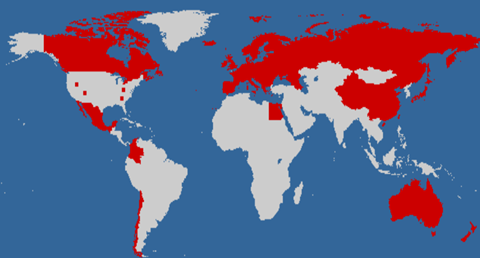
FAQs related to classroom implementation
One key point to understand about the CEFR is that it is descriptive, not prescriptive. Wherever you start, your students' needs will determine (1) which can-do statements you choose to incorporate into courses you currently teach, (2) which classroom activities and (3) independent study resources you use in order to meet your students' specific needs. Start with sequences of classroom activities that center around a specific theme Start with the can-do statements for the level/s you teach If you have any questions or suggestions regarding specific can-do statements or about can-dos in general, please contact us at ecostar@mail.iucc.ac.il, we will be happy to start the can-do conversation! ECOSTAR's Resource Bank has six zones. Each zone contains resources that support different aspects of the framework. The six zones are as follows: Resources in this zone These sequences of classroom activities with teacher guidelines were specially designed by the ECOSTAR team to support implementation of the Framework for English Teaching in Higher Education in Israel. Resources in this section also illustrate how teachers can use multimedia to integrate all four language skills into the EFL/EAP classroom. These sequences of activities center around seven different themes: Veganism (A2 Elementary / Besisi), Organ Donation, Sustainability (B1 – Intermediate / Mitkadmim Aleph), as well as Ethics, Innovation, and Business Communication (B2 – Upper Intermediate / Mitkadmim Bet). This zone includes background materials and recommended reading for teachers who until now may not have taught writing and speaking at the tertiary level. This section also includes assessment rubrics for writing and speaking that were developed by ECOSTAR. Additional resources include templates for creating instructional resources that support can-dos, links to websites that teachers may find useful as well as many more. Two key CEFR principles focus on encouraging students to (1) be less teacher-dependent and take more responsibility for their own learning and (2) regard language learning as a lifelong process worth investing in, not just as something that stops after reaching exit level. To support increased learner autonomy and encourage students to become more responsible for their own learning, ECOSTAR's independent learning resources are freely available for all learners, whether or not they are registered for English courses. This zone contains a large range of resources that focus on aspects of language that require drill and practice, such as grammar, vocabulary and pronunciation. These resources were selected by the ECOSTAR team and include: Content area courses taught in English to non-native English speakers are becoming increasingly popular at higher education institutions in Israel. This zone contains resources as well as an exemplar course on sustainability. This zone will contain copyright-free resources that members of the EFL/EAP community have shared so that other teachers don’t have to 'reinvent the wheel'. Together we can do more - if you have copyright-free resources that you would like to contribute, please contact us at ecostar@mail.iucc.ac.il This question is best formulated in a slightly different way: What are the most important can-do statements within my specific context and for my particular student population? The answer to the question would then depend on the contextual constraints and the importance attached to the can-do statements by your particular target audience, which in turn would define the number to be covered in a given course. Various aspects of your teaching may change in relation to what you teach, your perception of what it means to learn a language and how you view your students. Focus on all four skills Your teaching will now be addressing integration of speaking, writing and listening in addition to reading comprehension. To integrate these four mutually reinforcing skills into your lessons, you may be using new activities and technologies that you haven’t used before, as there had been no need to do so. Focus on communicating effectively The ability to communicate involves three macro-skills: Reception, Production, and Interaction. Reception specifically includes reading and listening skills, while Production and Interaction also involve speaking and writing skills. Grammar and vocabulary are viewed mainly as a means to an end – a means through which meaningful and effective communication in English can take place. Focus on learner autonomy One of the CEFR’s goals is to encourage learners to become more autonomous by helping them to self-assess their levels of language proficiency in different areas and become aware of their own ‘gaps’. Students can then access ECOSTAR's self-study resources in order to close these gaps. Teaching for tomorrow Easy-to-access independent study resources can help students continue to improve their English proficiency beyond exit level courses. ECOSTAR’s Resource Bank aims to ultimately provide students with freely available independent learning resources that support what they will have to do in English during their academic studies as well as in the workplace. The Internet now provides teachers with a virtually limitless range of instructional materials. The decision regarding instructional materials will depend, naturally, on your objectives, which will be derived from the can-do statements. To help students achieve these can-dos, CEFR-aligned courses use authentic, 'real-world' materials and activities that engage the students and reinforce all four language skills. ECOSTAR's Resource Bank gives you access to a large range of carefully selected open educational resources that you can incorporate into your current courses to support different can-do statements. You are invited to contribute additional resources to this growing bank. This will depend on your context and your target audience. Furthermore, you will probably not be teaching reading comprehension as a separate component of the course, but rather reading comprehension would be integrated with other language skills. For example, you might ask your students to read an article not just to answer a set of reading comprehension questions, but for the purpose of completing an assignment that requires students to integrate ideas from more than one source on a given topic. Assessment should be derived from the objectives for the course, and these will, to a certain extent, determine the tools of assessment. The various tools of assessment you choose should give you insights regarding the extent of a student's progress towards the can-do statements as well as the level of achievement of those can-do statements. The Professional Development Resources for Instructors zone in the ECOSTAR Resource Bank provides access to rubrics for language skills you may not have taught before, such as writing and speaking. These can be used as is, or adapted for your particular purposes and context. Your student assessment should reflect the can-do statements you chose to integrate into your course. This should be an on-going process, encompassing both formative and summative assessment, so your assessment would be made up of a number of components (such as a traditional quiz, a performance task, a presentation, etc.) Each of these components may be weighted differently to reflect their relative importance when calculating a student's final grade for the course. We recommend that if your final exam is only devoted to reading and/or writing, it should not exceed 40% of the final grade, in order to provide opportunities for integrated assessment of all skills. The Framework provides can-do statements that can be integrated into your existing courses. If you have discipline-specific courses at the advanced proficiency levels, the can-do statements can be integrated into discipline-specific courses just as easily as into general EFL courses. Absolutely not! The Framework for English Teaching in Higher Education in Israel provides a common language and a "common ruler" to assess the level of language proficiency. The choice of content and methodological approaches is up to you, and should be determined by the goals of your institution and program. By integrating the four skills and selected can-do statements into your existing course, you will be helping your students meet their 21st century English language needs. We encourage institutions to ultimately adopt the Framework for English Teaching in Higher Education in Israel as a whole. However, change is a process and should be instituted in stages. The EAQUALS Self-help Guide for Curriculum and Syllabus Design, pg.3 A recommended first step is to have department heads and/or a representative from your institution participate in the online professional development course provided by ECOSTAR. The participants will then be able to train members of their own departments, and access to the online course will be available to their respective institutions. At the same time, individual support and assistance will be offered by ECOSTAR members. You may also consider piloting new courses and materials first, to review and evaluate, and we will be happy to help – please contact Dr. Ingrid Barth at ecostar@mail.iucc.ac.il. First, one of the goals of the ECOSTAR project is to standardize the teaching of English in higher education, in order to allow for mutual recognition of English courses both in Israel and abroad. This entails adopting a communicative, action-oriented approach, as presented in the CEFR. All skills should be integrated and not only included as isolated 'add-ons'. Second, as stated, in order to adopt a common language for evaluating the quality of our students' language and enabling mutual recognition, it is important to align with the CEFR-aligned Framework for English Teaching in Higher Education in Israel. According to Vanderbilt University's Center for Teaching, the flipped classroom model describes a reversal of traditional teaching. In the flipped classroom, students gain first exposure to new material outside of class, usually via reading or lecture videos. Class time is then used to do the harder work of assimilating that knowledge through strategies such as problem solving, discussion or debates. https://cft.vanderbilt.edu/guides-sub-pages/flipping-the- classroom . In a flipped classroom, activities involving “drill and practice” or lower-order thinking skills are covered outside the classroom, leaving room for activities incorporating application and other higher-order thinking skills in the classroom. For more on flipped teaching, see the TED talk by Salman Khan about using video to reinvent education. (https://www.youtube.com/watch?v=nTFEUsudhfs) One of the central goals of the independent learning resources in ECOSTAR's Bank is to support a flipped classroom model and free up limited class time for addressing the can-do statements.
A second way to explore ECOSTAR’s resources is to browse the sequences of classroom activity exemplars. Each sequence consists of different instructional resources or ‘learning objects’ that you can ‘pick and mix’ to meet your students’ specific needs and interests. More about Classroom Activity Exemplars zone
Look at the different can-dos, and think about which can-dos you currently focus on, and which you may want to start incorporating in your courses. To see if ECOSTAR's Resource Bank already contains exemplar classroom activities and/or independent study resources to support achievement of specific can-dos, copy-paste a can-do statement into the search-box on the top right corner of this site.
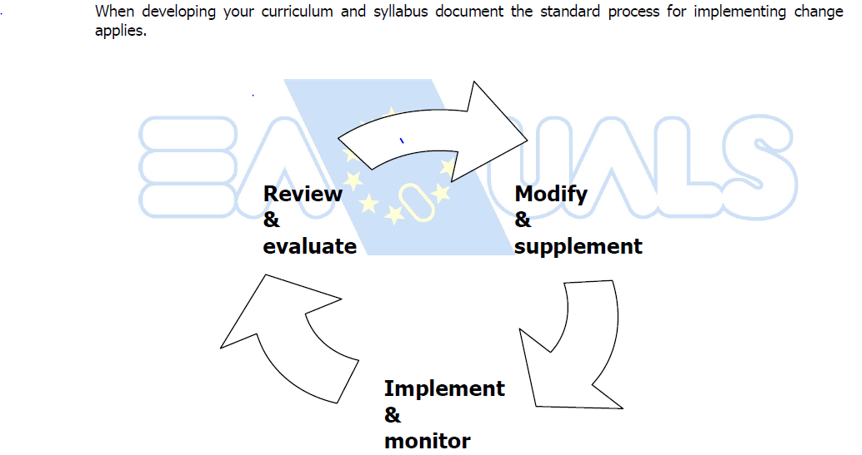
FAQs related to grammar
Two Internet websites clearly describe typical grammar profiles of learners worldwide at each CEFR level: Cambridge University Press, together with leading researchers and the British Council, used the multi-million word Cambridge English Corpus to compile a comprehensive list of grammar features that learners typically know at each of the six CEFR levels. The list provides examples and details of verb tenses, articles, major word classes, modal and auxiliary verbs, word order, reported speech and more. http://www.examenglish.com/CEFR/cefr_grammar.htm This site provides, among other things, practice tests (with feedback) for self-assessment of CEFR level, and free resources for independent study that prepare students for international placement exams. (http://www.examenglish.com/examscomparison.php) . The Bank's Independent Learning Resources zone contains a curated collection of over 100 instructional resources that cover grammar topics required for CEFR levels (which are related to the levels of the Framework for English Teaching in Higher Education in Israel). These resources include interactive exercises with feedback, teaching points and hints to facilitate independent learning. The grammar resources in the ECOSTAR Resource Bank have been collected from a wide range of institutions and individuals. These sources include sites recommended by ECOSTAR's European partners, who have taught CEFR-aligned English courses for many years (special thanks to our EU partners Lil Ercole, Fatima Bassi and Sonia Munteanu). Additional sources of material are well-known academic institutions such as Purdue University's OWL and Wisconsin's Wisc-online, as well as content providers such as the BBC and the British Council. We have also included free practice resources from reliable commercial sites that help students prepare for international placement exams such as IELTS and TOEFL (for information on how these exams map onto CEFR, see http://www.versanttest.com/technology/featured/Fact%20Sheet%20-%20Versant%20English%20comparison%20to%20other%20English%20tests.pdf). The Bank's grammar resources enable students to 'level the playing field' by enabling them to: ECOSTAR's curated collection of resources can also be searched according to language competences assessed by Online Linguistic Support (OLS). This makes it possible for students who want to participate in an international exchange program such as ERASMUS+ to prepare for the OLS language assessment. There is now no need to re-invent the wheel. There are overwhelming numbers of grammar exercises already out there, freely available on the Internet. The ECOSTAR team has carefully reviewed a large number of websites to find and select resources that provide clear explanations and well-constructed exercises with feedback, that facilitate independent study on CEFR-related grammar topics. This curated collection contains over a hundred interactive grammar resources, organized according to CEFR levels. We hope that in the future teachers will contribute grammar-related resources to be shared by all. There is never enough classroom time to help weaker students 'catch up'. Teachers who diagnose specific gaps in students' prior knowledge of grammar can assign specific ECOSTAR grammar resources for independent study to provide additional explanations and practice. The CEFR's focus on communicative effectiveness means that the focus now shifts from learning decontextualized grammar or vocabulary as ends in themselves to a contextualized approach through communicative tasks and activities. "Communicative pedagogic tasks aim to actively involve learners in meaningful communication. They are relevant, challenging but feasible and have identifiable outcomes." (CEFR, 2011 p.157). Essentially, these communicative tasks are open-ended, with many possible correct answers, and include the use of listening, speaking, reading and writing in order to interact. These tasks also "prepare students with the necessary sociolinguistic and pragmatic skills to interact appropriately and develop the cooperative skills needed for interaction, e.g. turn- taking, asking for clarification" (Exploring the CEFR: Big Ideas, page 8 ). Here is an example of a communicative pedagogical task that requires students to listen, react, and respond in writing on an open-ended grammar-based task:
Instead of using only decontextualized 'drill and practice' exercises to teach the present continuous tense, students print out and listen to Rod Stewart's 'I am sailing' before class. Students are asked to listen to this song before class, while reading the lyrics of this song. While they listen to the song, students read the words of the song and underline different examples of the present continuous tense. During class, students work in pairs – they collaborate in English in order to write four additional lines to the song, using present continuous tense. Each pair presents their work to the class.
FAQs related to vocabulary
The short answer is, According to Annette Capel, (English Profile Journal, 2012) there are around 4,700 headwords included up to B2 level, and 6,970 headwords from A1 to C2. CEFR wordlists, as in the example for "know" below, show the same word across many levels, with different meanings at each level: (http://www.englishprofile.org/images/pdf/eng_pro_information_booklet.pdf. ) This unique approach to words and wordlists is a more accurate reflection of the cumulative process required in order to 'know' a word. However, placing different senses of the same target word at different CEFR levels often makes these lists more complex to work with, in comparison to other well-known high-frequency wordlists such as Coxhead's (2000) Academic Word List (AWL) and the new Academic Vocabulary List (AVL) developed by Davies and Gardner (2013). CEFR wordlists were compiled by the following bodies: CEFR wordlists on based on data from the following sources: To see which words learners typically know at the different CEFR levels, go to: http://www.englishprofile.org/wordlists . The authors of the CEFR emphasize that: "We have NOT set out to tell practitioners what to do or how to do it. We are raising questions not answering them. It is not the function of the CEF to lay down the objectives that users should pursue or the methods they should employ" (Council of Europe, 2001: xi). According to the English Profile website, teachers should make their own decisions regarding their students' specific vocabulary needs. Clearly, these decisions should reflect students' current levels, age, reasons for learning English and areas of interest – the CEFR does not prescribe which words should be taught when or in what order. CEFR wordlists include a very wide range of words. This is partly because the CEFR focuses on learning and teaching language activities contextualized within four different 'domains': These diverse domains contribute towards the wide variety of words in the CEFR vocabulary wordlists. For tertiary level teachers who teach EAP, many words on these lists, especially words related to leisure (see example below) and food, may seem less relevant to their students' needs. Based on computerized analyses of academic articles across 4 different disciplines The ECOSTAR team has curated CEFR wordlists for college and university EFL teachers who want to focus mainly on vocabulary in the academic and occupational domains. These curated wordlists are designed to assist teachers and students in prioritizing learning of CEFR words and expressions. These curated wordlists are available on the Roads to Academic Reading website (http://Roadscefr.iucc.ac.il), Filter #1: Inter-rater agreement Five highly experienced tertiary level EFL teachers sifted through thousands of CEFR words. Levels of inter-rater agreement were used to identify words which expert raters considered most likely to be useful for EAP students who need to learn key vocabulary in both the academic and occupational domains. Filter #2: Identification of 'overlaps' CEFR wordlists contain many words that also appear on other research-based high-frequency wordlists, such as Nation's (2004) BNC lists, Coxhead's (2000) Academic Word List and the recently published Academic Vocabulary List (Davies & Gardener, 2013). Roads to Academic Reading offers three different tools that identify 'overlaps' between CEFR vocabulary and other high-frequency wordlists. Tool #1: Wordlists ROADS wordlists provide translations for words at each of the six CEFR levels. In addition to translations into Hebrew and Arabic, hyperlinks to flashcards are provided for words that expert raters considered most likely to be useful for EAP students. Tool #2: 'also on' feature ROADS flashcards include an 'also on' feature. This feature shows: Tool #3: ROADS Text Profiler and Translation Table Teachers and students can load any digital text into the ROADS Text Profiler. This unique software will: Levelling the playing field ECOSTAR's independentstudy vocabulary resources enable students to: Lifelong Learning Access to these freely available open educational resources (OERs) will enable motivated students to continue learning English long after their English courses end. ECOSTAR's vocabulary resources enable teachers to: 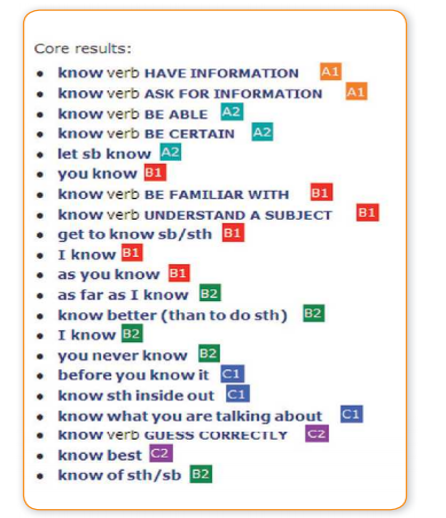

This site lets you search words by levels and additional filters. The following shows the results of a search for adjectives at the B1 level only, in British English: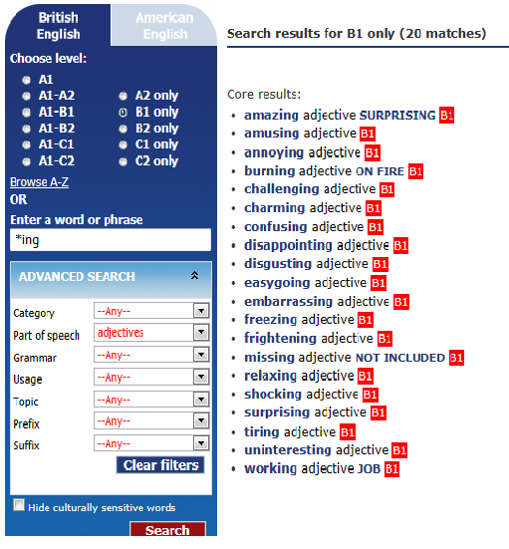
Domain
What does this cover?
Public
Everything connected to ordinary social interaction (business, administration, public services, cultural and leisure activities, the media, etc.)
Personal
Complements the public domain - family relations and individual social practices.
Occupational
Everything related to a person's occupation and workplace.
Educational
Learning/training contexts (usually related to an institution) where the aim is to acquire specific knowledge or skills.
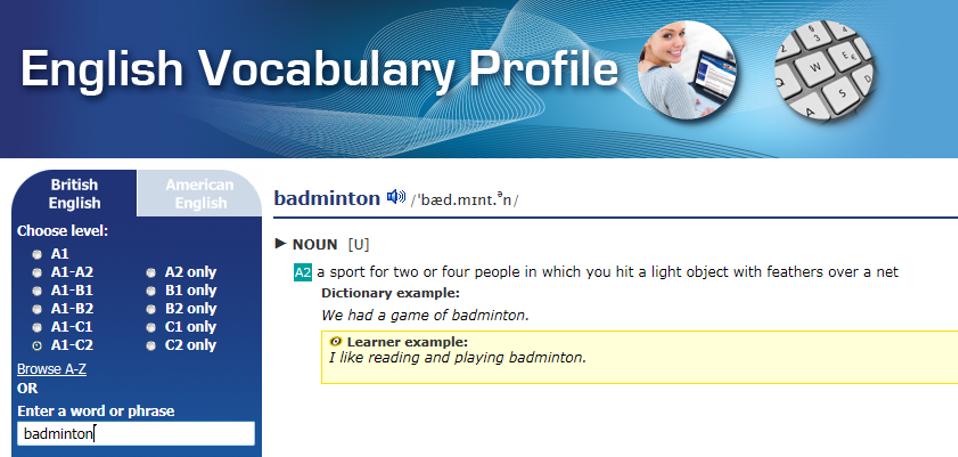
CEFR wordlists
AWL wordlists
Number of words
Over 7,000 words and phrases
570 headwords (just over 3000 words including derivatives) grouped into 10 sub-lists, according to frequency
Expressions in addition to single words
Yes
Single words only
Database
Data used to develop CEFR wordlists
Domains
"Mixed bag" from educational, occupational, personal and public domains
General academic domain only
Within the ECOSTAR project, two 'filters' were used to curate content of CEFR wordlists:
These 'overlaps' serve as an additional filter to help teachers and learners make smarter decisions about which words to focus on first.
